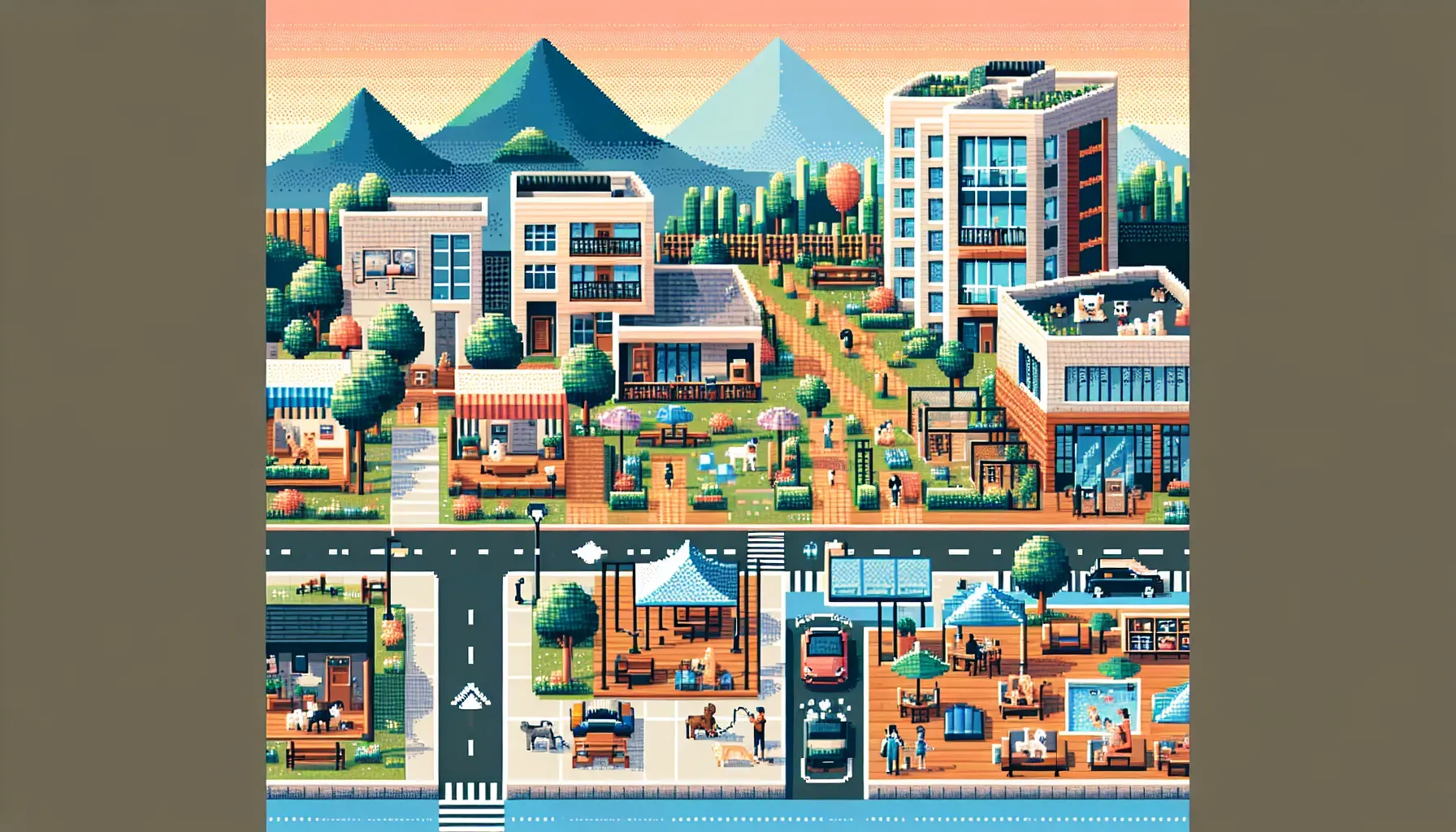Pet-Friendly Spaces: Redefining Urban Development and Real Estate Value

How incorporating pet amenities elevates property attractiveness and market value
The incorporation of pet amenities within residential and commercial properties has become a strategic means to elevate property attractiveness and enhance market value. Urban developers and real estate professionals are increasingly recognizing the allure of pet-friendly features in attracting potential buyers, tenants, and customers. By offering tailored amenities such as designated pet parks, grooming facilities, and pet-centric social areas, properties significantly expand their appeal to pet owners seeking convenience and a sense of community for themselves and their pets. This inclusivity not only contributes to increased demand but also serves as a distinguishing factor in an increasingly competitive real estate landscape.
Urban planning meets animal companionship: Developing integrated pet-friendly zones
The convergence of urban planning with the concept of animal companionship has led to the development of integrated pet-friendly zones within urban communities. From designated walking paths and pet exercise areas to strategically positioned waste disposal facilities, these zones reflect a harmonious blend of thoughtful urban design and consideration for pet needs. Such deliberate integration not only fosters a more inclusive environment for pet owners but also cultivates a sense of communal responsibility towards animal welfare. Furthermore, these integrated pet-friendly zones contribute to fostering stronger bonds among residents, promoting an active and socially enriched community fabric.
Related Article: Beyond Words: Visual Storytelling in Pet Care Communication
The economic impact of pet-friendly policies on local businesses and community appeal
Beyond the realm of real estate, the implementation of pet-friendly policies exerts a notable economic impact on local businesses and community appeal. Accessible pet-friendly establishments such as cafes, retail outlets, and recreational venues cater to the burgeoning demographic of pet owners seeking places where they can socialize with their pets without constraints. This trend translates into increased foot traffic for businesses, promoting higher engagement and fostering a welcoming ambiance that resonates with both pet-owning and non-pet-owning clientele. Consequently, this surge in consumer activity contributes to bolstering local economies while reinforcing the overall desirability of a community as an attractive place to live, work, and socialize.
Real estate's new niche: Crafting homes with built-in pet wellness centers
The evolution of real estate unveils a new niche centered around crafting homes with built-in pet wellness centers. These specialized facilities encompass dedicated spaces for pet grooming, veterinary care, and recreational activities tailored to meet the diverse needs of pets within residential settings. By seamlessly integrating these amenities into the fabric of modern homes, real estate developers cater to the growing demand for comprehensive care solutions that prioritize the well-being and comfort of both human occupants and their pets. This innovative approach not only positions properties as holistic living spaces but also reflects an evolving understanding of pets as integral members of households, deserving harmonious cohabitation within domestic environments.
Related Article: Furry Ambassadors: Leveraging Celebrity Pets to Raise Awareness on Global Wildlife Conservation
The rise of pet considerations in architectural design and functional outdoor spaces
The ascent of pet considerations in architectural design has prompted a reimagining of functional outdoor spaces to accommodate the diverse needs of pets within urban settings. From innovative rooftop dog runs to thoughtfully landscaped green areas designed for off-leash activities, architectural visionaries are shaping outdoor environments that seamlessly intertwine human leisure with companion animal engagement. This paradigm shift transcends traditional notions of outdoor design by embracing inclusivity through versatile spaces that cater to pets’ exercise, socialization, and relaxation needs alongside those of their human counterparts.
Analyzing the ROI of pet-friendly modifications in residential and commercial properties
As real estate stakeholders increasingly prioritize the integration of pet-friendly modifications in residential and commercial properties, meticulous analysis of the return on investment (ROI) elucidates the profound impact of such alterations. Notably, properties equipped with purposefully tailored features such as durable flooring materials, strategically positioned waste management solutions, and secure outdoor enclosures demonstrate heightened market desirability and sustained long-term value appreciation. Moreover, these modifications yield tangible returns through accelerated leasing velocity, extended tenant retention, and amplified property resale potential, underscoring their pivotal role in fostering enduring economic viability for real estate ventures.
Pet inclusivity: A key factor in driving occupancy rates and tenant satisfaction
The embrace of pet inclusivity emerges as a key factor in driving occupancy rates and tenant satisfaction across residential landscapes. Properties that adopt transparently inclusive policies regarding pet ownership unequivocally amplify their appeal to a wider spectrum of potential residents seeking accommodation for themselves and their pets. By fostering an environment where pets are regarded as valued members of the community rather than restrictive liabilities, property managers cultivate an atmosphere conducive to tenant satisfaction while simultaneously propelling occupancy rates amidst an increasingly competitive rental market.
Success stories: Cities leading the way in pet accommodation and urban design innovations
Inspirational success stories abound from cities leading the way in pioneering pet accommodation and urban design innovations. Notable urban centers have underscored the transformative potential that stems from prioritizing pet-friendly urban development strategies, reaping multifaceted benefits ranging from vibrant community engagement to bolstered tourism appeal. By exemplifying best practices in visionary urban planning that seamlessly integrates companion animal needs into public spaces, these cities set a precedent for fostering harmonious coexistence between humans, animals, and built environments-proving that purposeful inclusivity yields enduring dividends in enriching urban living experiences.
In conclusion
The integration of pet-friendly spaces within urban development represents a progressive paradigm shift with far-reaching implications across real estate valuation, community dynamics, and lifestyle enrichment for both residents and their beloved pets. By embracing intentional inclusivity in architectural design, outdoor environments, and local policies, urban landscapes transcend traditional boundaries to foster vibrant communities that celebrate the integral bond between people and their animal companions.






